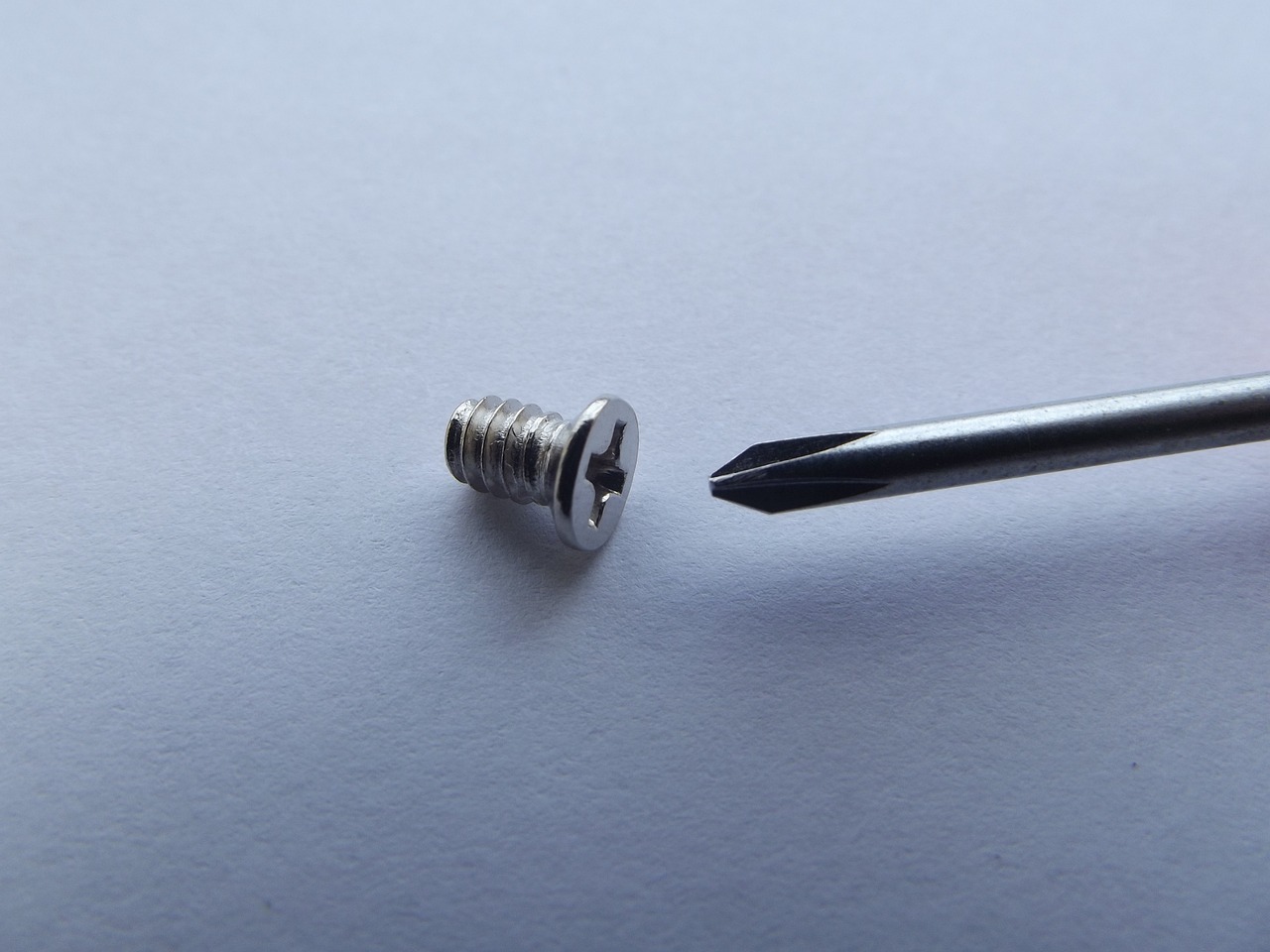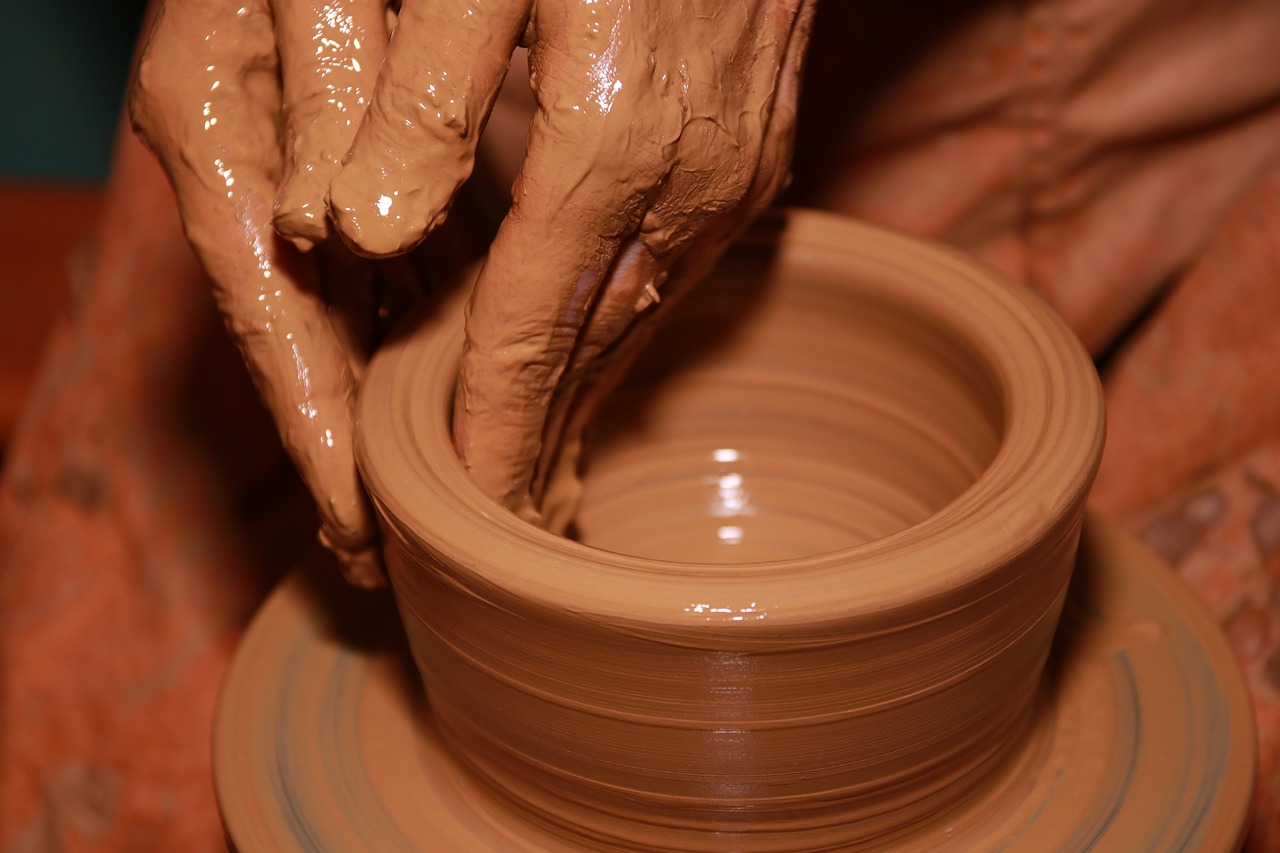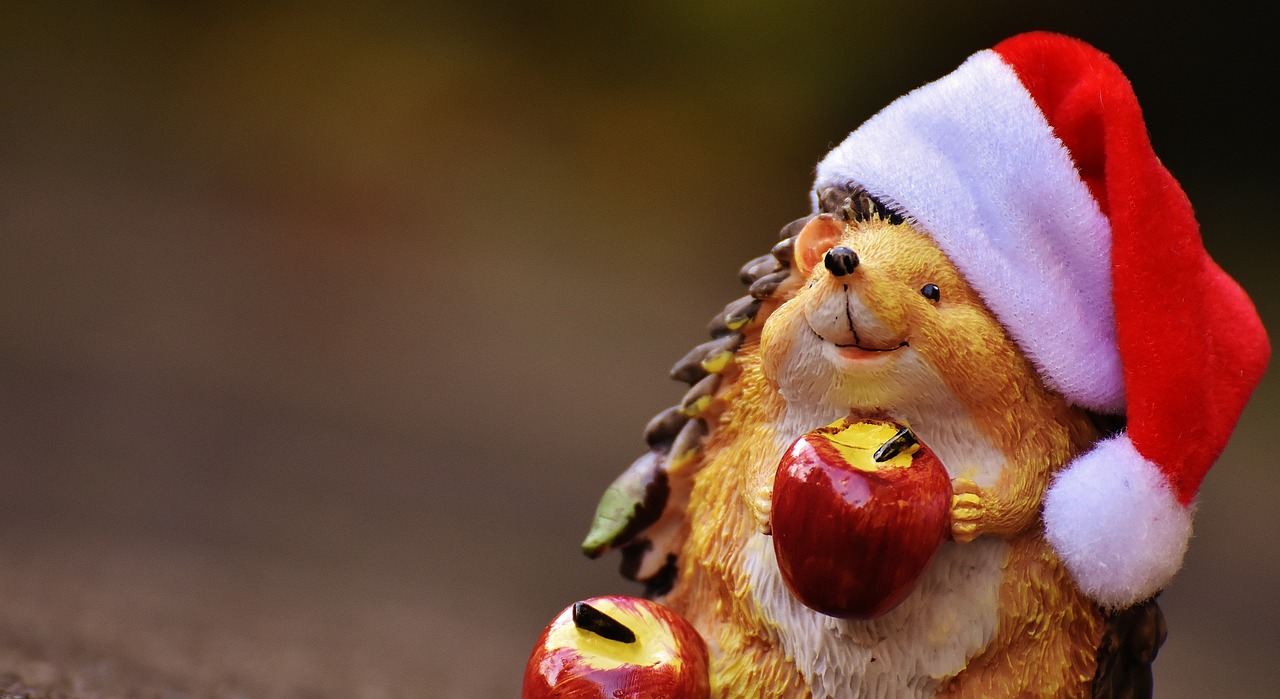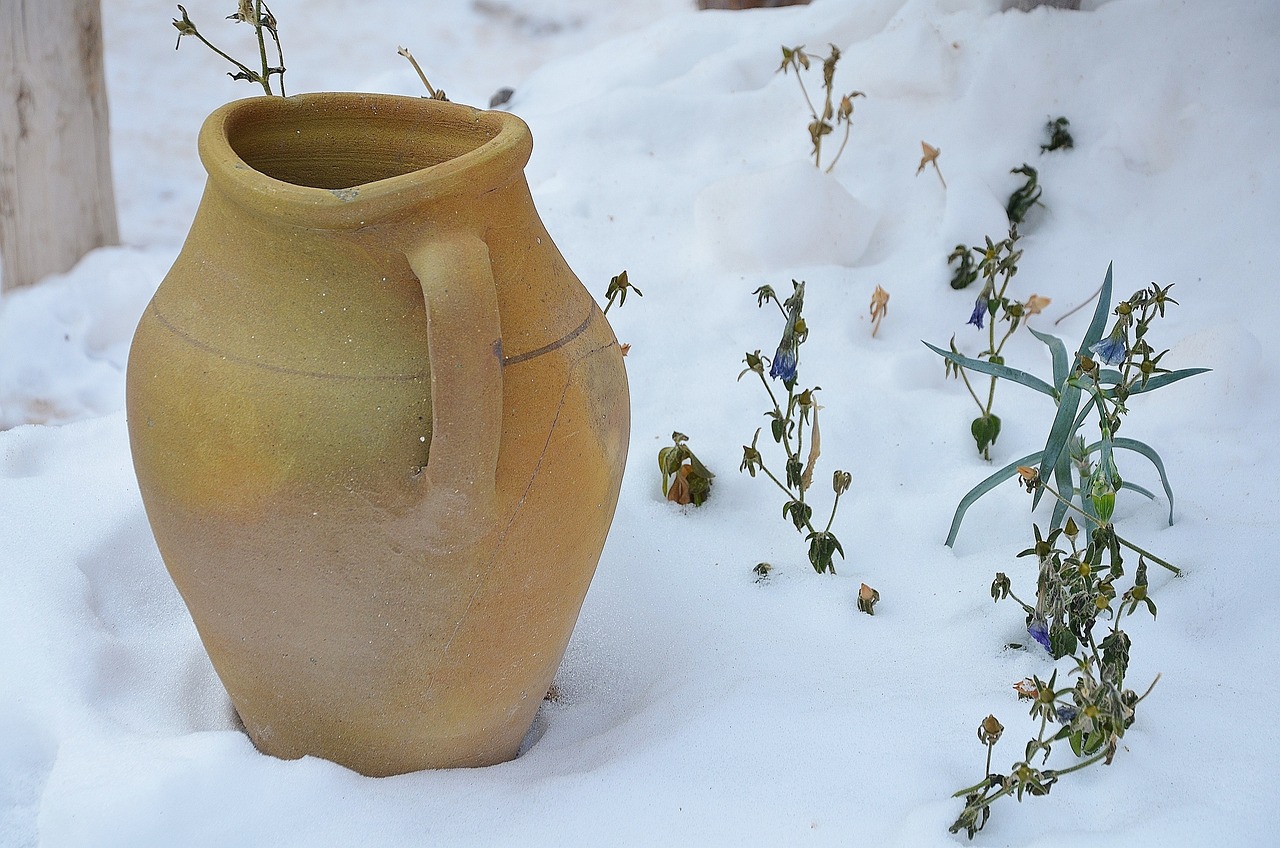Essential tips for newbie ceramic hobbyists
Welcome to the fascinating world of ceramics! If you're a beginner, you might be feeling a mix of excitement and a touch of nervousness. Don't worry; every expert was once a beginner too! This article provides valuable insights and practical advice to help you navigate the intricate paths of the ceramic arts. Whether you're looking to create functional pottery or stunning decorative pieces, understanding the fundamentals will enhance your creative journey.
Understanding the different types of clay available is crucial for beginners. The three main types you'll encounter are earthenware, stoneware, and porcelain. Each type has unique properties that affect your work. For instance, earthenware is great for beginners due to its workability and vibrant colors, but it's less durable. Stoneware, on the other hand, is sturdier and ideal for functional pieces, while porcelain, often considered the 'queen of clays', offers a refined finish but can be trickier to handle. Knowing the characteristics of each clay type will help you select the best option for your projects.
Equipping yourself with the right tools is key to successful pottery. A basic toolkit should include items like a pottery wheel, rolling pin, and wire cutter. As you progress, you might want to invest in more advanced equipment such as a kiln for firing your creations. Here’s a quick list of must-have tools:
- Pottery Wheel
- Rolling Pin
- Wire Cutter
- Sponge
- Wooden Modeling Tools
Having the right tools not only makes the process smoother but also sparks creativity!
Hand-building techniques are fundamental for beginners. They allow you to express your creativity without the need for a pottery wheel. Start with pinch pots, which are made by pinching the clay into shape. Then, explore coil building, where you roll out long strands of clay and stack them to form your piece. Finally, try slab construction, which involves rolling out flat pieces of clay and joining them together. Each technique opens up a world of possibilities for creating unique ceramic art.
Glazes can transform ceramics from plain to extraordinary. However, understanding their properties is essential. There are various types of glazes, including glossy, matte, and transparent. Each type has its application techniques and firing processes. For instance, applying a glossy glaze can give your piece a vibrant finish, while a matte glaze creates a more subtle look. Experimenting with different glazes will empower you to achieve the desired finishes on your work.
Firing is a critical step in ceramics. It solidifies your work and brings your artistic vision to life. Beginners should familiarize themselves with two main firing methods: bisque firing and glaze firing. Bisque firing prepares the clay for glazing, while glaze firing melts the glaze to create a glass-like surface. Understanding kiln operation is vital; always follow safety guidelines and manufacturer instructions to ensure successful results.
Adding decorative elements can elevate your ceramic pieces. Techniques such as painting, stamping, and carving allow you to personalize your creations creatively. For example, you can use underglazes to paint intricate designs before firing, or try carving patterns into the clay for a textured finish. The possibilities are endless, so let your imagination run wild!
Every beginner faces challenges, and it’s essential to learn from them. Common mistakes include overworking the clay, which can lead to cracks, or applying glazes too thickly, resulting in drips. To improve your skills, take the time to understand the materials and techniques. Remember, each mistake is a stepping stone toward mastery!
Connecting with fellow ceramic enthusiasts can enhance your learning experience. Consider joining local classes, online forums, or social media groups dedicated to ceramics. These communities provide invaluable support, inspiration, and advice, making your ceramic journey more enjoyable and enriching. Plus, sharing your work and receiving feedback can be incredibly motivating!
Q: What is the best type of clay for beginners?
A: Earthenware is often recommended for beginners due to its workability and vibrant colors.
Q: Do I need a kiln to start pottery?
A: While a kiln is essential for firing ceramics, many community studios offer kiln access for beginners.
Q: How long does it take to learn pottery?
A: Learning pottery is a journey, and it varies for each individual. With practice, you can start creating simple pieces within a few weeks.

Choosing the Right Clay
When it comes to diving into the world of ceramics, one of the first and most crucial decisions you'll make is choosing the right type of clay. Think of clay as the foundation of your artistic creation—just like a house needs a strong base, your pottery needs the right clay to flourish. There are several types of clay available, each with its unique properties, and understanding these can help you select the best option for your projects.
First up, we have earthenware. This clay is usually red or brown and is known for its low firing temperature, making it a popular choice for beginners. Earthenware is quite forgiving and easy to work with, allowing you to experiment without the fear of ruining your piece. However, it’s important to note that earthenware is porous, which means it might not be ideal for functional items that hold liquids unless properly glazed.
Next, let’s talk about stoneware. This type of clay is fired at a higher temperature, which gives it a dense and durable quality. Stoneware is excellent for creating functional pottery like mugs, plates, and bowls, as it is less porous than earthenware and can withstand daily use. If you’re looking for versatility, stoneware might just be your best friend in the ceramic world.
Then there’s porcelain, often considered the “fancy” clay. It’s known for its smooth texture and beautiful white finish. Porcelain requires a higher firing temperature and can be a bit tricky to work with, especially for beginners. However, if you're willing to learn, the results can be stunning. Porcelain is perfect for creating delicate pieces and intricate designs, making it a favorite among experienced ceramicists.
To help you visualize the differences, here’s a quick comparison table:
| Type of Clay | Firing Temperature | Porosity | Best For |
|---|---|---|---|
| Earthenware | Low (around 1,830°F) | High (porous) | Decorative items, non-functional pottery |
| Stoneware | Medium (around 2,190°F) | Low (durable) | Functional pottery, dinnerware |
| Porcelain | High (around 2,400°F) | Very low (non-porous) | Delicate pieces, fine art pottery |
Ultimately, the choice of clay will depend on what you want to create. Are you aiming for functional pottery, artistic sculptures, or decorative pieces? Each clay type has its strengths and weaknesses, so consider what suits your artistic vision best. Don't forget to experiment! Sometimes, the best way to learn is by trying out different clays and seeing which one resonates with you. The world of ceramics is vast and full of possibilities, so don’t be afraid to get your hands dirty and explore!
- What is the best clay for beginners? Earthenware is often recommended for beginners due to its forgiving nature and lower firing temperature.
- Can I mix different types of clay? While it’s possible, mixing clays can lead to issues during firing. It’s best to stick to one type for your projects.
- How do I know which clay is suitable for my project? Consider the end use of your piece—functional items generally require stoneware or porcelain, while decorative pieces can be made from earthenware.

Essential Tools and Equipment
When diving into the world of ceramics, having the right tools and equipment can make a world of difference. Think of it like cooking; you wouldn't want to bake a cake without measuring cups or a mixer, right? Similarly, in ceramics, your tools are your best friends. They help you transform a lump of clay into a stunning masterpiece. So, what do you need to get started?
First and foremost, every ceramic hobbyist should invest in some basic hand tools. These include items like a potter's rib, which helps to smooth and shape your clay, and a wire cutter, which is essential for cutting clay easily. Additionally, a good set of loop tools will allow you to carve and shape your pieces with precision. You might also want to grab a rolling pin for flattening your clay and a needle tool for detailing and scoring. These tools are the backbone of your ceramic toolkit and will serve you well as you explore different techniques.
Next, let’s talk about your workspace. A sturdy worktable is essential, as it provides a stable surface for your projects. You might also want to consider a clay board, which is a smooth surface that makes it easier to work with your clay without it sticking. And don’t forget about protective gear! An apron can save your clothes from clay splatters, and a dust mask is a wise choice when working with dry materials.
Now, if you're serious about your ceramic journey, you might want to invest in some advanced equipment. A pottery wheel is a game-changer for many artists, allowing for more complex shapes and designs. However, if a wheel isn’t in your budget just yet, don’t worry! Hand-building techniques are equally rewarding and can lead to stunning results. If you do get a wheel, consider pairing it with a kiln for firing your pieces. While kilns can be expensive, many community studios offer kiln access, so check out local resources!
Finally, let’s not overlook the importance of storage solutions. Clay can be messy, and keeping your workspace organized is vital for maintaining your creative flow. Invest in some containers for your tools and a shelf for drying your pieces. A simple toolbox can keep your hand tools safe and sound, ready for your next session.
In summary, having the right tools and equipment is essential for any newbie ceramic hobbyist. Not only do they enhance your creative process, but they also make your journey into ceramics more enjoyable and productive. So gear up, get your hands dirty, and let your creativity flow!
Q: Do I need a pottery wheel to start with ceramics?
A: Not at all! While a pottery wheel can be beneficial, many beginners start with hand-building techniques that don't require one. You can create beautiful pieces without it!
Q: What type of clay should I use as a beginner?
A: Earthenware is a great choice for beginners because it's easy to work with and fires at lower temperatures. As you gain experience, you can explore stoneware and porcelain.
Q: How do I clean my tools after use?
A: It's best to clean your tools while the clay is still wet. Use water and a sponge to remove any residue. For tougher spots, a stiff brush can help. Just make sure to dry them thoroughly afterward!

Basic Hand-Building Techniques
When it comes to ceramics, hand-building techniques are your best friends, especially if you’re just starting out. They allow you to create unique pieces without the need for a potter's wheel, which can be intimidating for beginners. Think of hand-building as sculpting with clay—it's all about molding and shaping your materials to bring your creative vision to life. In this section, we'll explore three fundamental methods: pinch pots, coil building, and slab construction.
Let's start with pinch pots. This technique is probably the simplest and most accessible for beginners. Imagine taking a ball of clay and squeezing it gently between your fingers and thumb, creating a small bowl shape. It’s like making a little clay hug! To make a pinch pot, simply follow these steps:
- Take a ball of clay, about the size of a golf ball.
- Press your thumb into the center, creating a deep indentation.
- Pinch the clay between your thumb and fingers, rotating it to build up the walls.
- Continue pinching until you achieve your desired thickness and shape.
Pinch pots can be a great way to practice your hand control and get a feel for the clay. Plus, they’re perfect for creating small bowls, cups, or decorative items!
Next up is coil building. This method involves rolling out long, snake-like pieces of clay (coils) and stacking them to form a shape. Picture building a clay tower, layer by layer. Here’s how you can get started:
- Roll out coils of clay to your desired thickness—about the width of a pencil works well.
- Start by placing the first coil on your work surface and shape it into a circle for the base.
- Continue adding coils on top of each other, smoothing the joints with your fingers or a tool.
- Don’t forget to blend the coils together as you go to create a seamless look!
Coil building is fantastic for creating larger pieces like vases or pots, and it allows for a lot of creativity in terms of shape and design.
Finally, let’s talk about slab construction. This technique involves rolling out flat pieces of clay (slabs) and then cutting and assembling them to form shapes. Think of it like building with blocks, where each slab acts as a building block for your creation. To get started with slab construction, follow these steps:
- Roll out a slab of clay to your desired thickness, usually around 1/4 inch thick.
- Use a knife or clay cutter to cut your slab into the shapes you need.
- Join the pieces together using slip (a mixture of clay and water) to create a strong bond.
- Use tools to smooth out the seams and refine your design.
Slab construction is perfect for making items like plates, boxes, or even wall hangings. It opens up a world of possibilities for creativity!
As you dive into these hand-building techniques, remember that practice makes perfect. Don’t be afraid to experiment and let your creativity flow. Each piece you create is a step towards mastering the art of ceramics. Before you know it, you'll be crafting stunning pieces that are not only functional but also a reflection of your unique style!
- What is the best clay for beginners? Earthenware is often recommended for beginners due to its workability and lower firing temperature.
- How long should I let my pieces dry before firing? It’s best to let your pieces dry for at least 24 hours, but thicker pieces may need longer to avoid cracking.
- Can I use regular paint on my ceramics? No, it’s important to use glazes specifically designed for ceramics to ensure they are food-safe and durable.

Understanding Glazes
When it comes to ceramics, glazes are like the icing on a cake; they can transform a simple piece into a stunning work of art. Understanding glazes is essential for any ceramic hobbyist, especially beginners. Glazes not only add color and texture but also serve to seal and protect the clay body. However, the world of glazes can seem overwhelming at first. So, let’s break it down into manageable pieces!
First off, it’s important to know that there are several types of glazes, each with unique properties and uses. Here are some of the most common types:
- Glossy Glazes: These glazes have a shiny finish and are great for vibrant colors. They reflect light beautifully, making your ceramics pop.
- Matte Glazes: Matte glazes offer a soft, non-reflective surface. They are perfect for a more subtle, earthy look.
- Transparent Glazes: These allow the clay body or underglaze decoration to show through. They are often used over colored slips or underglazes.
- Opaque Glazes: Opaque glazes completely cover the clay body, hiding any imperfections and providing a solid color.
- Celadon and Tenmoku: These traditional Asian glazes are known for their beautiful, rich colors and textures.
Now that you know the types of glazes, let’s talk about application techniques. Applying glaze is an art form in itself, and there are various methods to choose from:
- Dipping: This method involves dipping your piece into a bucket of glaze. It’s quick and provides an even coat, but be careful not to dip too deeply!
- Brushing: Using a brush allows for more control and can create interesting patterns, but it may require multiple coats for even coverage.
- Spraying: This technique offers a smooth and even application, ideal for larger pieces, but it does require some equipment.
After applying your glaze, the next critical step is the firing process. Glazes need to be fired in a kiln to mature, which means they undergo a chemical transformation. There are two main firing stages in ceramics:
| Firing Stage | Description |
|---|---|
| Bisque Firing | This is the first firing that turns raw clay into a hard, porous state. It prepares the piece for glazing. |
| Glaze Firing | This second firing melts the glaze, allowing it to bond with the clay body and create a finished surface. |
One of the most exciting aspects of glazing is that the final outcome can sometimes be a surprise. The way a glaze reacts during firing can depend on various factors, including the kiln atmosphere, temperature, and even the placement of the piece in the kiln. So, don’t be discouraged if your first attempts don’t turn out as expected; it’s all part of the learning process!
In summary, understanding glazes is a vital part of your ceramic journey. From selecting the right type to mastering application techniques and firing processes, the world of glazes offers endless possibilities for creativity. So, roll up your sleeves, experiment, and let your imagination run wild!
Q: What is the difference between underglaze and glaze?
A: Underglaze is typically a colored slip applied to the surface of the clay before glazing. It retains its color after firing, while glaze is applied over the underglaze and provides a glassy finish.
Q: Can I use regular paint instead of glaze?
A: No, regular paint is not suitable for ceramics as it won’t withstand the high temperatures of firing. Always use ceramic-specific glazes.
Q: How do I know when my glaze is ready to be fired?
A: Once your glaze has dried completely and has a uniform appearance, it is ready for firing. Ensure there are no drips or uneven spots before placing it in the kiln.

Firing Basics
Firing is a critical step in the ceramic process, and understanding it can make or break your creations. Think of firing as the moment when your clay transforms from a fragile, wet material into a durable, solid piece of art. Without it, your beautiful pottery would just be a pile of mud! There are two main firing stages that every ceramic hobbyist should be familiar with: bisque firing and glaze firing.
During bisque firing, your clay pieces are heated to a temperature that removes moisture and organic materials. This process makes the clay more durable and prepares it for glazing. It’s like giving your pottery a solid foundation before you start decorating! Typically, bisque firing occurs at temperatures ranging from 1,830°F to 1,940°F (1,000°C to 1,060°C). After this stage, your ceramics become porous, allowing glazes to adhere properly.
Once your pieces have undergone bisque firing, it’s time for the exciting part: glaze firing. This step involves applying a glaze and firing the piece again at a higher temperature, usually between 1,830°F and 2,350°F (1,000°C to 1,300°C), depending on the type of clay and glaze you are using. Glaze firing not only adds color and texture to your pieces but also seals them, making them waterproof and food-safe. It’s like putting the finishing touches on a masterpiece!
| Firing Type | Temperature Range | Purpose |
|---|---|---|
| Bisque Firing | 1,830°F - 1,940°F (1,000°C - 1,060°C) | Remove moisture and organic materials |
| Glaze Firing | 1,830°F - 2,350°F (1,000°C - 1,300°C) | Apply glaze and seal the piece |
Understanding your kiln is also crucial. If you're using an electric kiln, familiarize yourself with its controls and settings. Each kiln operates differently, and knowing how to manage the firing schedule can help you achieve the best results. You might even want to keep a firing log to track temperatures and times for future reference. This way, you'll be able to replicate successful firings and avoid any mishaps!
Don’t forget about safety! Always wear protective gear when operating a kiln. The temperatures involved are extremely high, and proper ventilation is essential. It’s like cooking in an oven; you wouldn’t want to leave the door closed while baking a cake, right? Keeping the area well-ventilated ensures that any fumes are safely dispersed.
In summary, mastering the firing process is essential for any ceramic enthusiast. By understanding the differences between bisque and glaze firing, knowing your kiln, and prioritizing safety, you’ll be on your way to creating stunning ceramic pieces that you can be proud of. So, are you ready to fire up your creativity?
- What is the purpose of bisque firing? Bisque firing prepares your clay for glazing by removing moisture and organic materials.
- What temperature do you fire ceramics at? Bisque firing typically occurs between 1,830°F and 1,940°F, while glaze firing can go up to 2,350°F.
- Do I need a kiln for firing ceramics? Yes, a kiln is essential for reaching the high temperatures required for firing clay and glaze.
- How can I ensure my kiln is safe to use? Always follow the manufacturer's instructions, wear protective gear, and ensure proper ventilation during firing.

Surface Decoration Techniques
When it comes to ceramics, the surface decoration techniques you choose can truly transform your pieces from simple clay forms into stunning works of art. Think of your ceramic creations as blank canvases waiting for that perfect splash of personality. Whether you’re aiming for a rustic charm or a sleek modern look, understanding these techniques will empower you to express your creativity fully.
One of the most popular methods is painting. This technique allows you to apply colors and patterns directly onto the surface of your pottery. You can use underglazes for a matte finish or glazes for a glossy look. The beauty of painting is that you can layer colors and create intricate designs that reflect your unique style. Just imagine your favorite mug adorned with a beautiful floral pattern or a vibrant abstract design!
Another exciting method is stamping. This technique involves using stamps to create textures and patterns on your clay. You can use commercially made stamps or even carve your own from soft materials like rubber or wood. Stamping can add depth and interest to your pieces, making them stand out. For instance, a simple bowl can be transformed into a mesmerizing piece by adding a stamped geometric pattern around its rim.
Carving is yet another technique that can elevate your work. This method involves cutting into the surface of the clay to create designs or textures. It’s akin to drawing, but instead of using a pen, you’re using a carving tool. This technique can be particularly effective on leather-hard clay, allowing for clean, precise lines. Imagine a vase with delicate floral carvings that catch the light beautifully!
For those looking to explore beyond traditional methods, sgraffito is a fascinating technique worth trying. This involves applying a layer of slip (liquid clay) to your piece and then scratching through it to reveal the clay body underneath. The contrast between the slip and the clay can create stunning visual effects. It’s like creating a hidden treasure that reveals itself with each scratch!
Don’t forget about the power of glazing. While glazes are often considered a finishing touch, they can also serve as a decorative element. You can experiment with different glaze combinations to achieve unique effects, such as layering glazes to create depth or using a technique called crackle glazing to add an antique look to your pottery. The possibilities are endless!
As you dive into these surface decoration techniques, remember that practice makes perfect. Don’t be afraid to experiment and make mistakes; that’s part of the learning process. Each technique offers a new way to express yourself and can lead to unexpected and delightful results. So grab your tools, unleash your imagination, and let your ceramic journey begin!
Q: What tools do I need for surface decoration?
A: Basic tools include brushes for painting, stamps for texture, carving tools for intricate designs, and sponges for smoothing. You can also use household items like forks or leaves for unique patterns!
Q: Can I use regular paint on ceramics?
A: It's best to use specialized ceramic paints or underglazes that are designed to withstand firing in a kiln. Regular paint may not adhere properly and can be harmful when fired.
Q: How do I ensure my decorations will survive the firing process?
A: Always test your decorations on a small piece before applying them to your main project. Make sure to follow the manufacturer's instructions for any glazes or paints you use.
Q: What is the best time to apply decorations?
A: Most surface decorations are applied to leather-hard clay, which is firm but still damp. This allows for better adhesion and less risk of damage during the decorating process.

Common Mistakes to Avoid
Embarking on your ceramic journey can be as thrilling as it is daunting. As a newbie, you're bound to make a few mistakes along the way, but fear not! Recognizing and avoiding these common pitfalls can save you time, frustration, and even money. One of the biggest mistakes beginners make is not taking the time to understand their materials. Each type of clay has its own unique properties, and failing to choose the right one for your project can lead to disastrous results. For instance, using earthenware for a project that requires stoneware can lead to cracking during firing. So, always do your homework!
Another common error is neglecting the importance of proper wedging. This step is crucial for eliminating air bubbles and ensuring an even consistency in your clay. If you skip this, you might end up with pieces that warp or crack during firing. Think of wedging as kneading dough; it’s essential for achieving the right texture. Moreover, many beginners are eager to dive straight into complex projects without mastering the basics first. It's tempting to jump into intricate designs, but starting with simpler forms like pinch pots or coils will build your confidence and skills.
Additionally, overworking your clay can be a subtle yet significant mistake. While it's important to manipulate your clay to achieve the desired shape, excessive handling can dry it out or make it too tough to work with. Remember, clay has its limits, much like a sponge that can only absorb so much water before it starts to break down. So, be gentle and know when to stop!
Another aspect that often gets overlooked is the importance of drying times. Rushing the drying process can lead to cracks or other defects. It’s wise to let your pieces dry slowly and evenly, preferably under plastic to retain moisture. Think of it like letting a cake cool before frosting; a little patience goes a long way in achieving a beautiful finish.
Finally, many beginners underestimate the significance of glazing techniques. Applying glaze too thickly or unevenly can result in drips or an undesirable finish. Always practice your glazing methods on test pieces before committing to your main work. It’s a bit like painting a wall; you wouldn’t want to go straight for the main room without testing your colors first, would you?
In summary, avoiding these common mistakes will not only improve your ceramic skills but also enhance your overall enjoyment of the craft. Remember, every expert was once a beginner, and learning from these missteps is all part of the journey!
Q: What is the best clay for beginners?
A: Earthenware is often recommended for beginners due to its workability and forgiving nature. It’s perfect for hand-building and simple projects.
Q: How long should I let my clay pieces dry before firing?
A: Ideally, allow your pieces to dry for at least 24 to 48 hours, depending on their thickness. It's crucial to ensure they are completely dry to avoid cracking during firing.
Q: Can I use regular paint on my ceramic pieces?
A: No, regular paint is not suitable for ceramics. Always use glazes that are specifically designed for high temperatures and pottery.
Q: What should I do if my piece cracks during drying?
A: If your piece cracks, assess the damage. Small cracks can sometimes be repaired with slip, but larger cracks may mean the piece is unusable. Learning to recognize the signs of trouble can help you in future projects.

Joining a Ceramic Community
When it comes to diving into the world of ceramics, one of the best decisions you can make as a newbie is to join a ceramic community. Imagine stepping into a vibrant space filled with like-minded individuals, all eager to share their experiences, tips, and, most importantly, their passion for clay. Being part of a community not only enhances your learning but also adds a layer of support that can be incredibly beneficial when you're just starting out. So, why should you consider joining a ceramic community?
First and foremost, connecting with fellow ceramic enthusiasts opens up a treasure trove of knowledge. You’ll find that many experienced potters are more than willing to share their insights, whether it’s about the best clays to use, effective glazing techniques, or even troubleshooting common issues. This exchange of information can save you from making the same mistakes they did, allowing you to learn from their experiences. Plus, there’s something truly special about sharing your creations and getting constructive feedback from others who understand the effort and artistry involved.
Another fantastic aspect of joining a ceramic community is the opportunity for collaboration. Imagine working on a group project where everyone contributes their unique skills and ideas. This not only fosters creativity but also strengthens friendships as you bond over shared challenges and triumphs. Whether it's organizing a community exhibition or participating in a pottery swap, these collaborative experiences can significantly enrich your ceramic journey.
Moreover, many ceramic communities offer workshops and classes that cater to all skill levels. These hands-on learning opportunities can be invaluable for beginners, as they provide a structured environment to practice and refine your techniques. From wheel throwing to advanced glazing methods, these classes can accelerate your growth as a ceramic artist. Plus, you’ll often find that these sessions are not just about learning; they’re also about having fun and enjoying the process of creating together.
If you’re worried about feeling out of place or intimidated, don’t be! Most ceramic communities are welcoming and inclusive, embracing individuals from all backgrounds and skill levels. You’ll quickly realize that everyone started somewhere, and the collective enthusiasm for ceramics creates a nurturing environment where you can flourish. Whether you're joining a local pottery club, participating in online forums, or engaging with social media groups, the camaraderie and support you’ll find are truly uplifting.
To help you get started, here are a few options for finding a ceramic community near you or online:
- Local Pottery Studios: Many studios offer classes and have a community space for potters to gather.
- Online Forums: Websites like Pottery Heads or Reddit’s r/Pottery are great for connecting with other enthusiasts.
- Social Media Groups: Platforms like Facebook have numerous groups dedicated to ceramics where you can ask questions and share your work.
In conclusion, joining a ceramic community can significantly enhance your journey as a pottery enthusiast. The friendships you’ll form, the knowledge you’ll gain, and the creative opportunities that arise are all part of the magic that comes from being involved with others who share your passion. So, don’t hesitate—reach out, get involved, and watch your skills grow in ways you never thought possible!
Q: How do I find a local pottery community?
A: Start by checking out local pottery studios, art centers, or community colleges that offer ceramics classes. You can also search online for local pottery groups on social media platforms.
Q: Are online ceramic communities as helpful as in-person ones?
A: Absolutely! Online communities can provide a wealth of resources, support, and inspiration, especially if you live in an area with limited local options.
Q: What should I expect when joining a ceramic community?
A: Expect to meet new friends, learn new techniques, share your work, and receive constructive feedback. It’s a supportive environment that encourages growth and creativity.
Frequently Asked Questions
- What type of clay should I start with as a beginner?
As a newbie, you might want to start with earthenware clay. It's easy to work with, forgiving, and great for hand-building projects. Once you get the hang of things, you can explore stoneware and porcelain, which offer different textures and firing temperatures.
- What essential tools do I need to begin my ceramic journey?
You'll want to gather a few basic tools to kick things off. Think of essentials like a pottery wheel (if you plan to throw), a rolling pin, cutting tools, and sponges. Don't forget about a kiln for firing your pieces, but you can often find community studios if you're not ready to invest yet!
- Can you explain the basic hand-building techniques?
Absolutely! Start with pinch pots, which are perfect for beginners. Then, try coil building to create taller pieces by stacking rolled clay. Lastly, slab construction lets you build flat shapes that can be assembled into more complex forms. Each technique opens up a world of creative possibilities!
- What should I know about glazes?
Glazes can make your ceramics pop! Familiarize yourself with different types of glazes, like transparent and opaque, and learn how to apply them properly. Remember, the firing process can change the color and texture of your glaze, so always test first!
- What are the different firing methods?
Firing is crucial in ceramics! There are two main types: bisque firing, which hardens your clay, and glaze firing, which melts the glaze to create a beautiful finish. Understanding these processes will help you achieve the best results for your creations.
- How can I decorate my ceramic pieces?
Get creative! You can use painting, stamping, or carving to add unique touches to your work. Experimenting with different techniques can really showcase your personal style and make your ceramics stand out!
- What common mistakes should I avoid?
Every beginner makes mistakes, but learning from them is key! Avoid rushing through the drying process, as this can lead to cracks. Also, be careful not to overload your kiln, as this can affect the firing results. Patience and attention to detail are your best friends!
- Why should I join a ceramic community?
Joining a community can be a game changer! You'll find support, inspiration, and valuable feedback from fellow ceramic enthusiasts. Whether it's local classes, online forums, or social media groups, connecting with others can enhance your learning and keep you motivated!



















